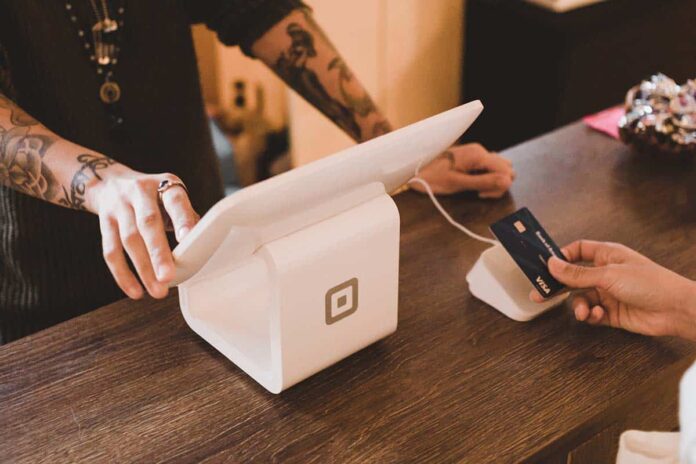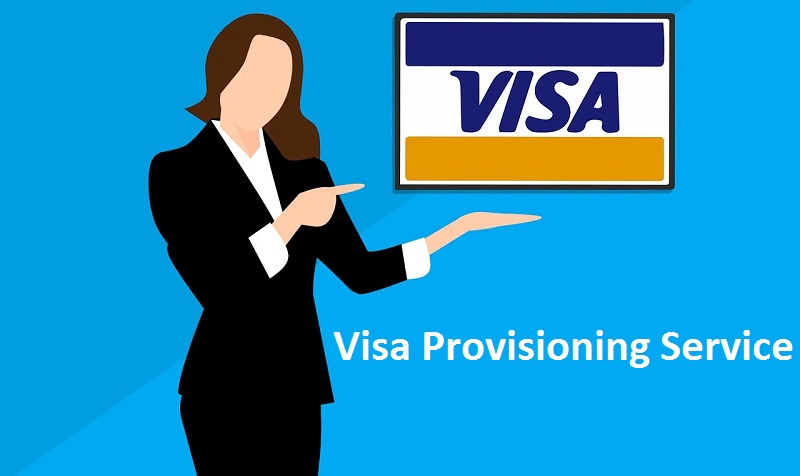Streamline visa applications with our Visa Provisioning Service. Navigate the process smoothly for a hassle-free experience.
Visa Provisioning Service Charge is a fee that Visa charges issuers and acquirers for using its Provisioning Service, which allows issuers to securely provision payment credentials to mobile devices.
You can usually trust that a Visa Provisioning Service or Purchase Authorization Pending charge appears on your bank statement or account.
This is because you have registered your card with an online merchant, a digital wallet provider, or another payment service.
Visa Provisioning Service charges should be reflected as zero ($0) on the account. This refers to a tokenization procedure many merchants use to protect sensitive account information.
Visa Provisioning Service
- This is especially popular with merchants who use e-wallet services or online retailers.
- Visa Provisioning Service fees will usually be rolled off your account within one week.
- Below are more details to help you decide if it’s worth your time.
What is the Visa Provisioning Service Charge?
- Many people will be worried if they see the Visa Provisioning Service Pending Charge appear on their bank statement’s transaction history.
- If you first see it, you’re probably going to be confused.
This is a pre-authorization fee from the retailer or digital wallet operator with whom you have done business.
- They use it to verify that the account is still valid.
- Before they approve your transaction, merchants want to verify that your payment method works.
- They can check in advance by paying a charge.
While you may see the Visa Provisioning Charge while shopping online or making in-app purchases with your connected device, you may also see it when you shop in-store using your connected device.
Some direct deposit companies may also use the Visa Provisioning Service fee. This is done to verify that your account is current before you deposit your check.
- If you have recently cashed a check, this might be true.
- You may also see a Visa Provisioning Fee if you add a credit card to your digital wallet. This is to verify that your bank account remains valid.
- If you add a debit or credit card to a digital wallet, such as Apple Pay, the digital payment provider can often verify that the account is active.
- Online retailers use tokenization to facilitate transactions rather than processing your account data.
- Amazon and Netflix are also taking this route, which processes transactions and recurring subscriptions.
The main takeaway from the Visa Provisioning Service is that it allows retailers to verify that your payment method or bank account is active.
Understanding the Visa Provisioning Service (Visa Provisioning Service) and the Tokenization System
Visa Provisioning Service Charge is a fee that Visa charges issuers and acquirers for using its Provisioning Service, which allows issuers to securely provision payment credentials to mobile devices.
The issuer or the card network, such as Visa, typically performs purchase authorization to confirm a cardholder’s eligibility and available credit or funds to complete a transaction.
This helps prevent fraudulent transactions and ensures the transaction can be completed successfully.
You can usually trust that a Visa Provisioning Service or Purchase Authorization Pending charge appears on your bank statement or account.
This is because you have registered your card with an online merchant, a digital wallet provider, or another payment service.
- Visa Provisioning Service charges should be reflected as zero ($0) on the account.
- This refers to a tokenization procedure many merchants use to protect sensitive account information.
- This is especially popular with merchants who use e-wallet services or online retailers.
- Visa Provisioning Service fees will usually be rolled off your account within one week.
- Below are more details to help you decide if it’s worth your time.
- If you first see it, you’re probably going to be confused.
- This is a pre-authorization fee from the retailer or digital wallet operator with whom you have done business.
- They use it to verify that the account is still valid.
- Before they approve your transaction, merchants want to verify that your payment method works.
- They can check in advance by paying a charge.
While you may see the Visa Provisioning Charge while shopping online or making in-app purchases with your connected device, you might also see it when buying in-store.
Some direct deposit companies may also use the Visa Provisioning Service fee. This is done to verify that your account is current before you deposit your check.
If you have recently cashed a check, this might be true.
You may also see a Visa Provisioning Fee if you add a credit card to your digital wallet. This is to verify that your bank account remains valid.
If you add a debit or credit card to a digital wallet, such as Apple Pay, the digital payment provider can often verify that the account is active.
Online retailers use tokenization to facilitate transactions rather than processing your account data.
Amazon and Netflix are also taking this route, which processes transactions and recurring subscriptions.
The main takeaway from the Visa Provisioning Service is that it allows retailers to verify that your payment method or bank account is active.
Understanding the Visa Provisioning Service (Visa Provisioning Service) and the Tokenization System
- Visa provisioning service charge purchase authorization
- This charge is for a tokenization system.
The Visa Token Service protects your credit card against unauthorised purchases. This system is responsible for the zero-dollar transactions you see on your transaction statement.
It also ensures that your account number is not compromised when purchasing.
Your 16-digit credit card number is no longer displayed. An identifier known as a token takes its place instead.
The token process allows merchants to process your payments without exposing your account information.
- Tokenization is more important for payments made with connected devices.
- Tokenization is increasingly important as payments are increasingly made with connected devices. Tokenization is required to enable cardless and card-free transactions.
- Online purchases are very common. Tokenization allows online merchants to handle payments securely.
- In-app purchases have become more popular. Visa cards can be embedded in mobile apps to allow you to make purchases anywhere.
Tokenization is also used for traditional in-store transactions. Consumers who have cards on their phones can move their devices over a payment terminal to complete a transaction.
How tokenization works
Step 1
A digital payment service allows you to enrol on your Visa card. Enter your account number, expiration date, CVC/security codes, name, address, and other personal information. An online retailer can be an example of this. They will store your account information if you wish to make repeat purchases. A digital wallet can also be used.
Step 2
The digital payment service will get in touch with Visa to ask for a payment token that can link your account to their website.
Step 3
Visa will then share the token with the issuer. This is typically your bank.
Step 4
Visa will replace your primary account number with the token once the bank or issuer approves the request. This unique identifier is specific to your account.
Step 5
Your purchases will be assigned tokens. Visa will share your tickets with the token requestor. This is an online retailer or digital wallet provider.
This token is unique, and you are the only one who can use it. It may not last forever.
Sometimes, it may only be used for a limited number of transactions before expiring. It may also apply to a specific online merchant. It may also be restricted to transactions done on your mobile device.
What are the uses of tokens?
Tokens can be used to protect your account information online and are useful in many situations.
There is a chance that the Visa Provisioning Charge might show up in your transaction history, whether you are making a purchase online or in-store using your mobile device.
The following sequence is required to use the tokenization system:
- You initiate the payment online, in-store, or in-app
- The payment service provider, which could be an online retailer or e-wallet, will give the token to the merchant or acquirer. This is an important part of the authorization request.
- The acquirer will receive the token and return it to Visa. This is how the purchase transaction can proceed.
Visa will then send the card payment and token details to the issuer (typically your bank) to authorise the transaction. After accepting or declining the transaction, the bank will send this decision back to Visa.
Next, the merchant will receive the payment and token.
This process allows you to make a payment to any entity without showing your account number.
This is a good thing for the merchant, as it means they don’t have to take security measures to ensure your information is safe and secure.
Are there any concerns about the Visa Provisioning Service fee?
If you have registered your payment details online with any merchants or e-wallet providers, you could be subject to a Visa Provisioning Service fee at any moment.
Although the line item might appear, it will not cost you any money. You are not able to withdraw funds without your knowledge.
You don’t need to call your bank. The zero-dollar charge should be rolled off your bank account within seven days.
You can contact your bank, service provider, or card company to inquire if it persists for more than a week.
What should you do if this service fee appears?
You might be worried if you have never registered an account with an online merchant or digital wallet.
It is very rare, however, that someone who has not registered a card or paid a payment method with an online merchant, e-wallet, or another payment provider will see the present charge.
Your card information can be stolen and registered to a service, even if you are unaware.
To find out if this is true, contact the customer service department of your bank or credit card provider.
You can also stop (hold or freeze) if you suspect that your card information was compromised to prevent any transactions from occurring.
Use this method if your card is lost or stolen temporarily.
This can be done via your online bank card account, payment provider, or app. You can reach customer service by phone.
Once your bank has confirmed that your information is safe, you can remove it from your account.
Visa Provisioning Service Fee: Last Word
Merchants may charge a Visa Provisioning Service fee to validate your payment method before authorising anything (typically a purchase or a deposit).
The total amount charged is $0 and should be reflected in your account history. The line item should be removed from your transaction history within seven days.
The tokenization system used to charge the charge helps protect your account number and other financial information from being exposed through online merchants, in-app purchases systems, in-store purchases with connected devices, etc.
The Visa Provisioning Service fee is a cost to ensure that your account remains active and valid.
If you don’t see the charge, if you cannot recall any transactions made recently, or if you have not saved your payment information with any service, contact your bank or payment provider and ask.









